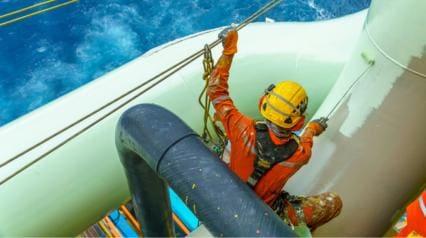What is Industrial Safety Equipment?
Industrial safety equipment refers to protective gear, tools, and devices that reduce the risk of accidents and injuries in industrial workplaces like manufacturing, construction, and mining, among others. These are worn or attached to the bodies of personnel assigned to high-risk settings, whether they are delegated hazardous jobs or are there simply to observe. Using these is mandated by various regulatory bodies.
Importance
Using safety equipment in hazardous working environments is vital in safeguarding employee health and well-being. The Bureau of Labor Statistics (BLS) reported over two million work-related injuries and illnesses in 2021. The National Security Council (NSC) also enumerated the top causes of these injuries: 36% is due to exposure to harmful environments, 21% is caused by overexertion, and 18% is attributed to falls, slips, and trips. The first and the last are easily preventable when industrial safety equipment is used.
It’s not just the worker who benefits from following this basic safety guideline. Companies also gain from this because injury prevention minimizes expensive treatment bills and compensation costs. More importantly, it also results in productivity. The NSC disclosed that up to 14 days are lost when an employee suffers from any kind of impairment.
Finally, businesses can also guarantee compliance with occupational health and safety regulations mandated by the Occupational Safety and Health Administration (OSHA), other government bodies, and standard leaders. Stiff fines and severe penalties are imposed when these protocols are not observed.
Types
There are numerous kinds of industrial safety equipment across sectors. Here are the most commonly used ones across industries:
Personal Protective Equipment (PPE)
This refers to various equipment that covers or shields different body parts like the head, face, hands, and feet to minimize or prevent exposure to physical, chemical, and biological hazards. Here are a few examples:
- Hard hats, earplugs, and steel-toe boots for carpenters and construction workers
- N95 masks and surgical gloves for surgeons, nurses, and other healthcare workers
- Welding shields and heavy-duty gloves for welders
Protective Clothing
Although this is considered by some as part of PPEs, protective clothing deserves a section of its own because this comes in various kinds and protects the largest segment of the body, from the neck down to the legs.
- Rubber aprons for welders
- Disposable paper gowns for ICU and surgical use
- Water-proof and heat-resistant coveralls for firefighters
Fall Protection Equipment
This refers to devices or structures used by personnel working at heights. Fall protection equipment is categorized into two types:
- Fall restraint system is considered the most important level of protection since it prevents the fall from occurring in the first place. This includes physical barriers around the work site like guard rails and structurally sound surfaces or a fixed leash that prevents the worker from reaching the hazard.
- Fall arrest systems stop the fall. This includes safety nets installed under the work site or personal fall arrest devices like a body harness connected to an anchor point.
Fire Safety Equipment
As the name implies, this is used by workers who are tasked to prevent or manage fire incidents. This includes the following:
- Fire extinguishers
- Fire alarm systems
- Heat-resistant overalls, full-face helmets, and breathing apparatus as the worker’s PPE
Lockout/Tagout (LOTO) Device
This is used to protect workers from accidental machine start-ups that would release electrical, mechanical, thermal, or hydraulic energy during repair or other maintenance work. Below are some examples:
- Lockout hasps and padlocks
- Lockout tags
- Lockout boxes for key safekeeping
Selection and Proper Use
Several factors must be considered in the selection and use of industrial safety equipment. These are the most essential:
- Hazard assessment – Practicing industrial hygiene is crucial in assessing hazards and stressors and identifying appropriate controls to minimize or eradicate them. During a workplace inspection, it is best to consider even the most minor risk so that the company can prepare for it.
- Quality and compliance – Companies should purchase equipment from industrial safety equipment suppliers that meet the safety and quality standards of regulators that govern the industry an organization belongs to. The criteria for PPEs is ANSI Z87.1-2015 while the standard for fire protective gear is NFPA 1971.
- Proper training and education – The provision of these industrial safety gear and devices is useless when the workers do not understand their function or importance. Rigorous training with evaluations, continuing education at safety inductions, and constant reminders during toolbox meetings are vital.
- Inspections and maintenance – Faulty industrial safety equipment and expired protective gear cause injuries and illnesses. Companies can prevent problems by conducting routine audits of their supplies and including pre-work inspections in the workflows.
- Reporting and feedback – Employees should be empowered to raise their concerns about the equipment. Aside from ensuring personnel safety, companies assure that workers are valued members of the team with these evaluations.
Create Your Own Industrial Safety Equipment Checklist
Eliminate manual tasks and streamline your operations.
Get started for FREE



